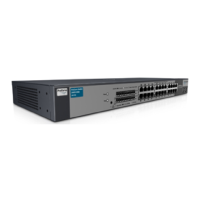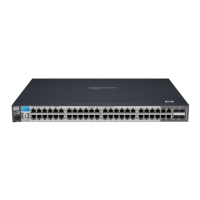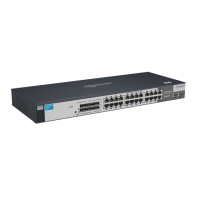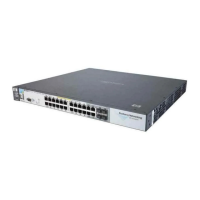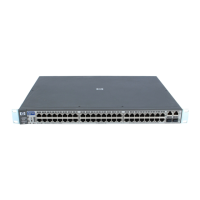6-27
Quality of Service (QoS): Managing Bandwidth More Effectively
Using QoS Types To Configure QoS for Outbound Traffic
QoS IP-Device Priority
QoS Type Precedence: 2
The IP device-priority option, which applies only to IPv4 packets, uses two
resources instead of one—one resource for the source IP address and one for
the destination IP address. Destination IP addresses have precedence over
source IP addresses. You can configure a maximum of 120 rules, or 60 rulesets
(source and destination IP addresses comprise a ruleset).
Where a particular device-IP address type has the highest precedence in the
switch for traffic addressed to or from that device, then traffic received on the
switch with that address is marked with the IP address type’s configured
priority level.
Note The switch does not allow a QoS IP-device priority for the Management VLAN
IP address, if configured. If there is no Management VLAN configured, then
the switch does not allow configuring a QoS IP-device priority for the Default
VLAN IP address.
IP address QoS does not support layer-2 SAP encapsulation. For more
information on packet-type restrictions, refer to ‘‘Details of Packet Criteria
and Restrictions for QoS Support’’, on page 6-66.
Options for Assigning Priority. Priority control options for packets
carrying a specified IP address include:
■ 802.1p priority
■ DSCP policy (Assigning a new DSCP and an 802.1p priority; inbound
packets must be IPv4.)
(For operation when other QoS types apply to the same traffic, refer to “QoS
Types for Prioritizing Outbound Packets” on page 6-9.)
For a given IP address, you can use only one of the above options at a time.
However, for different IP addresses, you can use different options.
